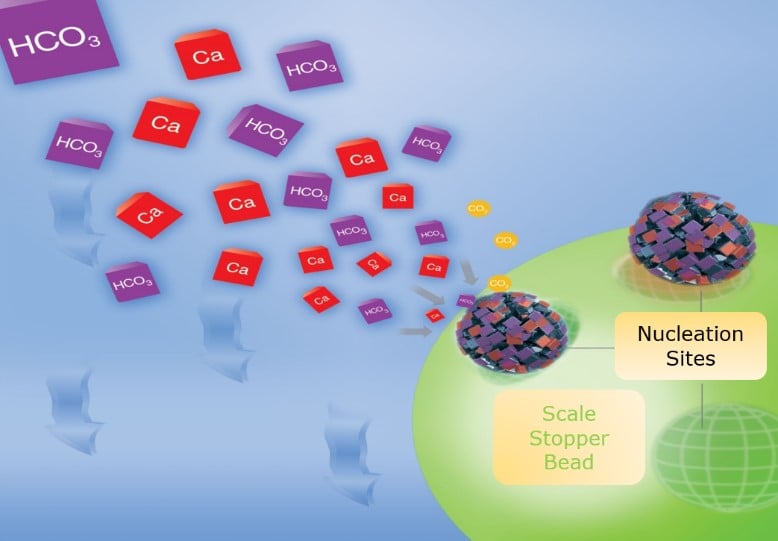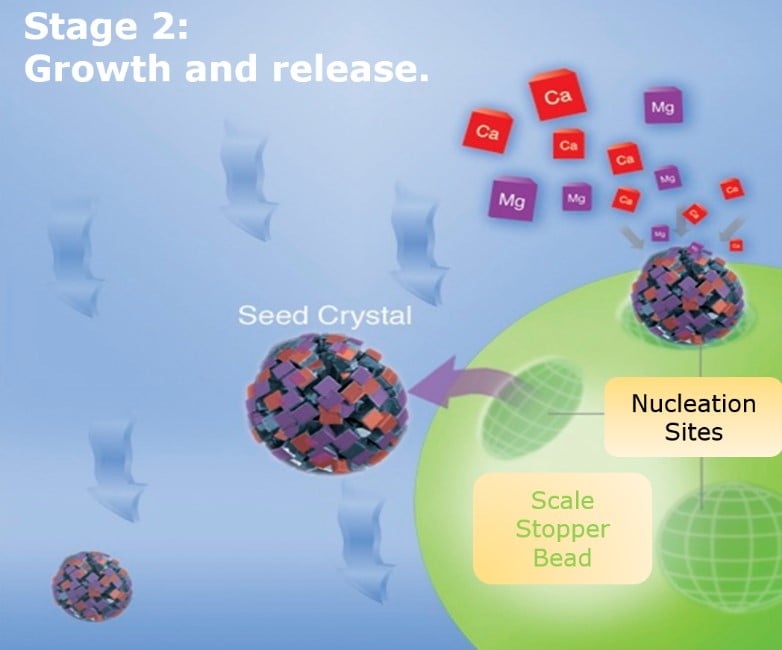A Basic Guide on How Scale Stopper Works and Why




How does the Scale Stopper work?
The Scale Stopper product relies on a technology called Template Assisted Crystallization (TAC). TAC produces a catalyic reaction that converts calcium and magnesium in the water into harmless, inactive microscopic crystals.
The diagrams below show calcium and magnesium ions attaching to nucleation sites on a Scale Stopper bead (green). A crystal forms at each of the nucleation sites with the accumulated ions. Once this crystal reaches the nanometer size range, it will be released back into the flow as an inactive particle in the water. These inactive particles are unable to form scale. The treated water will actually then gradually work away at the existing hardness deposits.


ASU Study
Comparison methods included: Electromagnetic Treatment, Electrically Induced Precipitation, Capacitive Deionization, and No Treatment. A table of the results is below, as well as a graph to visually represent the results from the study. Pictures to the right show how much scale remained after each treatment.
Visit our slideshare profile for a comprehensive presentation outlining how the Scale Stopper works in further detail.
Recent Posts
Clean Drinking Water for Cats: What Every Cat Owner Should Know
Why Clean Drinking Water Matters for Cats Hydration is critical to a cat’s overall health,…
Pet Hydration: What to Know About Water Safety
Clean Drinking Water for Dogs: What Every Dog Owner Should Know Clean drinking water is…
How to Ensure Fresh, Safe Water for Your Birds: Daily Care Tips for Bird Owners
Why Filtered Water for Birds Is Essential for Their Health Like food, clean drinking water…
U.S. Water Problems by Region: Common Contaminants & Solutions
Curious about U.S. water problems by region? Water quality isn’t just a national issue—it’s a…
Wildfire Water Contamination: How to Ensure Safe Water After a Fire
Wildfire Water Contamination: What You Need to Know After the Fires Drinking water contamination is…
Clean Water For Pickles: The Secret Ingredient
Using clean water for pickles is not just a best practice—it’s crucial for achieving great…


